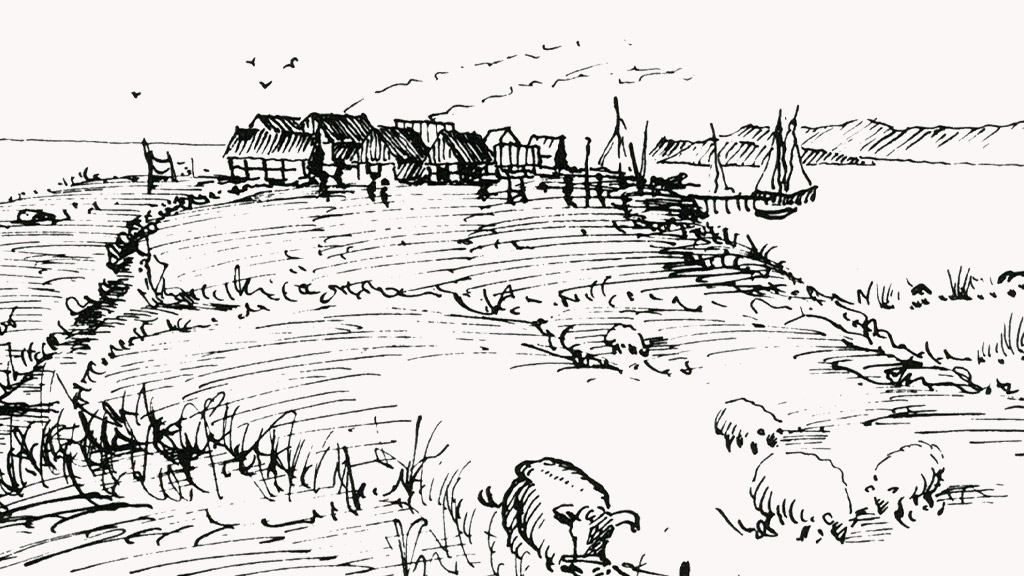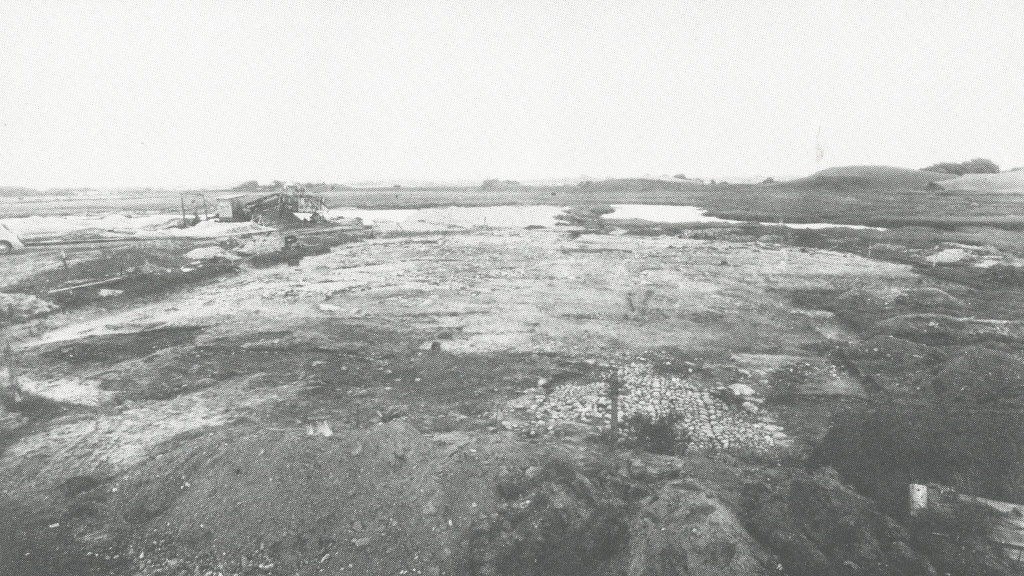
Sandhagen - The city lost to the sea
The story of a 16th century fishing village where archaeological finds reveal a life closely linked to fishing and trade with Europe.
The Renaissance fishing village of Sandhagen
500 metres south-west of here was the lost town of Sandhagen, built around the mid-16th century by farmers and fishermen who settled in the area to take advantage of the rich fishing opportunities.
Sandhagen was closely linked to the sea, and the town’s location on a sandy headland gave it its name, which means ‘the sandy promontory’. At that time you could sail along Magleby inlet to the church.

From thriving city to prey of the sea
The town grew rapidly and was inhabited by both islanders and newcomers from 1550 to 1613. The tax books contain surnames such as Skaubo (Skagen), Strynbo (Strynø) and Skotte (Scotland).
The town flourished for a few decades, but a gradual exodus began in the early 1600s as residents sought safer and more sheltered areas such as Bagenkop. Sandhagen was eventually abandoned and the remaining buildings fell into disrepair and were engulfed by the waves during storm surges.

Excavation of 18 houses
The existence of the town remained unknown for centuries until 1953, when coachman Alfred Jensen found stone floors and glazed pottery while excavating gravel. This led to archaeological excavations led by Hakon Berg of Langelands Museum.
The excavations revealed the remains of 18 houses, some well preserved and others badly damaged by storm surges. The houses were half-timbered, built on stone foundations, and typically had clay or stone floors. Several of the houses had tiled stoves and some had stained glass windows. Sandhagen’s houses faced a small square in the centre of the village.

More than 30,000 finds
Archaeologists discovered that the city was built in two phases. The first village was washed away by the sea, leaving only the floors. The same houses were rebuilt a few metres inland. Probably to protect them from future storms.

The excavations also unearthed more than 30,000 artefacts, providing a fascinating insight into life in the small fishing village. Everyday objects such as pots, pans, tools and imported goods from Germany and the Nederlands show that Sandhagen was not just an isolated village, but linked to a wider world of trade.

Today Sandhagen is an almost forgotten chapter in Langeland’s history, but through excavations and finds we can get a glimpse of life in the small town that once stood on this sandy spit.

Walk to Sandhagen
The remains of the town of Sandhagen are located in the centre of the Klise Inlet.
Take a beautiful 3.8 kilometre walk around Klise Inlet. Where Sandhagen used to be, there are still good opportunities to find potsherds and other artefacts from the town that once stood here.
The tour starts either from Bagenkop, or from the car parks at Ågabet or Art Tower 12 on Vestervej.
More Hidden Stories
Discover more hidden stories from Langeland at www.govisitlangeland.com/past
The project Langelands Hidden Stories is supported by the Danish Outdoor Council and developed by VisitLangeland and Langelands Museum.